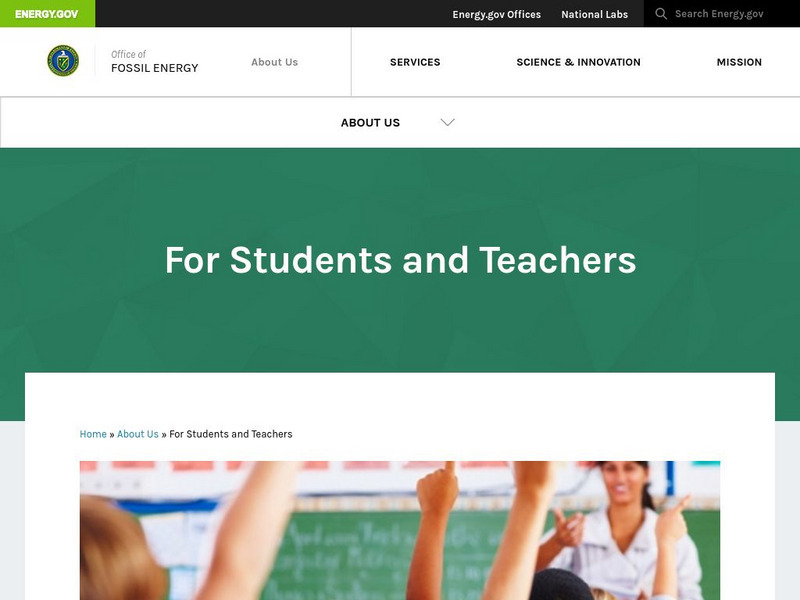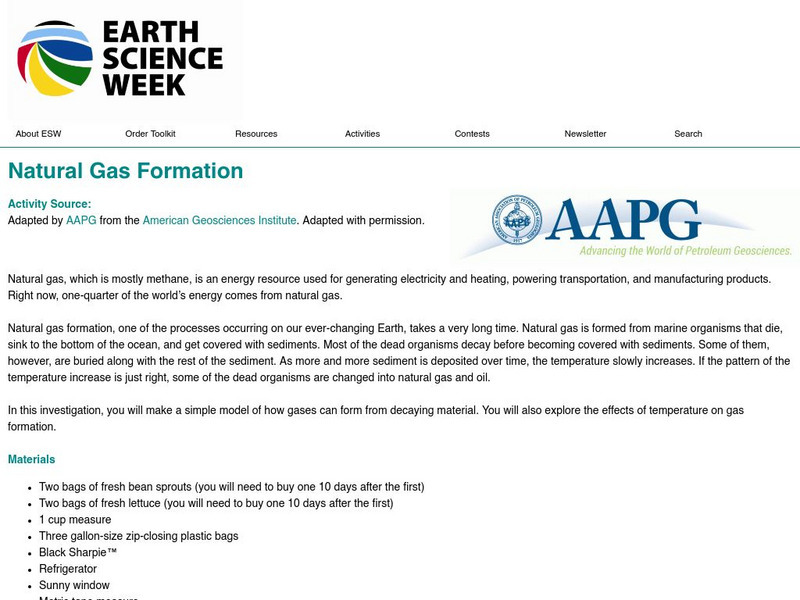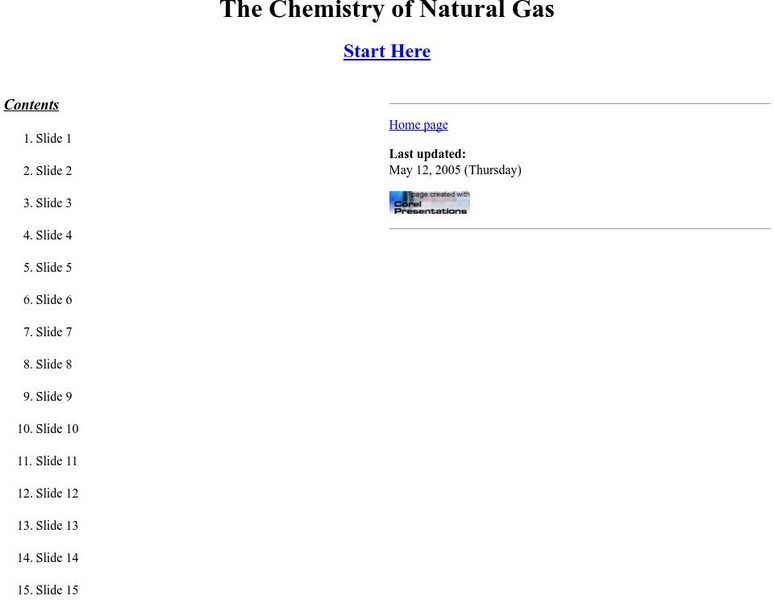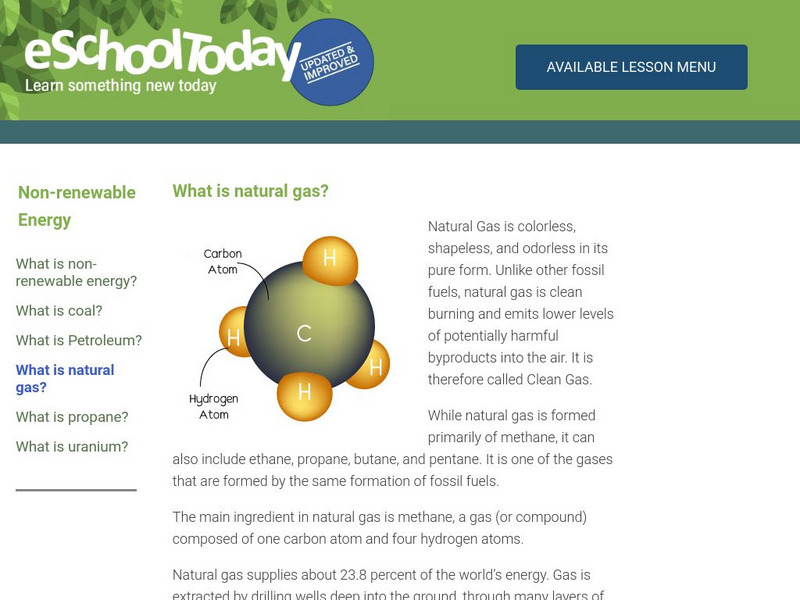Curated OER
Ammonium Nitrate - Efficient Fertilizers
Students study the chemistry of ammonium nitrate and consider the advantages and disadvantages of this compound. They compare different fertilizers and calculate the molar mass and percent nitrogen in the different fertilizers.
Curated OER
Is It Getting Hot In Here?
Young scholars describe several factors and ways climate change could effect communities. In this climate change lesson students research climate change and complete a worksheet.
Curated OER
Vulcan's Revenge-Volcanoes
Sixth graders research various types of volcanoes. They explore the various emissions that come from them. Offer some explanation why some erupt by "quietly" puring lava, while others blast out chunks of rock and clouds of ash and gases.
Curated OER
Volcano Vocabulary
In this volcano vocabulary worksheet, students match vocabulary words on the left with definitions on the right. Worksheet is labeled as a quiz but may be used as practice or review.
Curated OER
Drawing Conclusions
In this online, interactive worksheet, 5th graders complete a pre-test in regards to drawing conclusions. Students complete 10 multiple choice questions focusing on obtaining conclusions from the given information and click at the...
Curated OER
Mission 6: Renewable Energy
In these renewable energy worksheets, learners learn about renewable energy and energy sources. Students complete a 23 page packet for the activity.
Curated OER
Greenhouse Effect
Young scholars identify greenhouse gases. They explain why perfluorocarbons are a bad alternative to chlorofluorcarbons. They determine both the least and most influential greenhouse gases.
Curated OER
The Future of the Arctic National Wildlife Refuge
Students research the governments role is preserving the Arctic National Wildlife Refuge. They discuss the proponents and the opponents side of the issue.
Curated OER
Particulate Matter: The Lorax
Students investigate how dirty air is outside. They read and discuss the book, The Lorax, by Dr. Seuss. They investigate using jars and lids to compare the dirt left each day as they remove the lids. They observe the lids and discuss if...
Curated OER
Average Vehicle Occupancy In Your Community
Students determine the average vehicle occupancy in their community. In this transportation lesson students develop and analyze a survey to determine attitudes towards air pollution and transportation.
US Department of Energy
Department of Energy: Natural Gas
Natural gas is an abundant resource across the United States, and new discoveries and extraction methods have led to a dramatic rise in shale gas development -- making America the world's leading natural gas producer. We invest in...
CK-12 Foundation
Ck 12: Earth Science: Natural Gas Power
[Free Registration/Login may be required to access all resource tools.] Overview of natural gas' creation, usage, and effects.
CK-12 Foundation
Ck 12: Earth Science: Natural Gas Power
[Free Registration/Login may be required to access all resource tools.] Overview of natural gas' creation, usage, and effects.
Polk Brothers Foundation Center for Urban Education at DePaul University
De Paul University: Center for Urban Education: Natural Gas: An Energy Resource [Pdf]
"Natural Gas: An Energy Resource" is a one page, nonfiction, reading passage about natural gas, its uses, and how it gets to homes. It is followed by constructed-response questions which require students to provide evidence from the...
Polk Brothers Foundation Center for Urban Education at DePaul University
De Paul University: Center for Urban Education: Natural Gas: An Energy Resource [Pdf]
"Natural Gas: An Energy Resource" is a one page, nonfiction, reading passage about how natural gas is located, drilled for, and sent through pipelines throughout the country to people's homes. It is followed by questions which require...
US Department of Energy
Natural Gas: Fueling the Blue Flame
Natural gas is a colorless and odorless fossil fuel that is used in almost half the homes for heat. Learn more about this non-renewable energy resource.
American Geosciences Institute
American Geosciences Institute: Natural Gas: Background
A resource page on natural gas. Learn what natural gas is, how it used, how it is formed, how it is drilled, processed, and transported, and advantages and disadvantages.
American Geosciences Institute
American Geosciences Institute: Earth Science Week: Natural Gas Formation
In this investigation, students make a simple model of how gasses can form from decaying material. They will also explore the effects of temperature on gas formation.
National Academies of Sciences, Engineering, and Medicine
The National Academies: Our Energy Sources: Natural Gas
Energy production from natural gas is less destructive to the environment than energy produced from coal, but it is still produced from fossil fuels. While advances have been made in reducing its detrimental effects, our resources are...
Other
Institute for Energy Research: Fossil Fuels
A detailed article providing information about fossil fuel resources in the United States and how they impact economic growth. Several reports, which can be downloaded, examine energy policies, the potential for economic growth, and...
Other
Mackenzie Gas Project: About Natural Gas
This gives a brief explanation of what natural gas is and tells how it is formed, how we harness it and how much it takes to heat a home or an urban area.
Upper Canada District School Board
Tom Stretton's Chemistry Pages: The Chemistry of Natural Gas
Through an online slide-show format, learn about the history and chemistry behind the resource, natural gas.
eSchool Today
E School Today: Nonrenewable Energy: Natural Gas
Get the basics on nonrenewable energy. Learn about its uses and conservation.
Energy4Me
Energy4me: Oil and Natural Gas Book
A colorfully illustrated, and information-filled 74 page book on the history and uses of oil. .


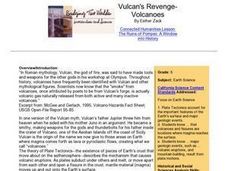





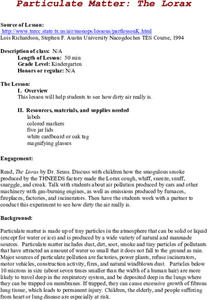
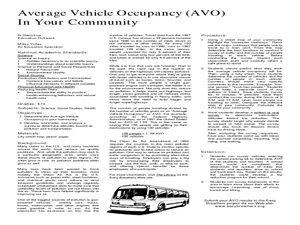
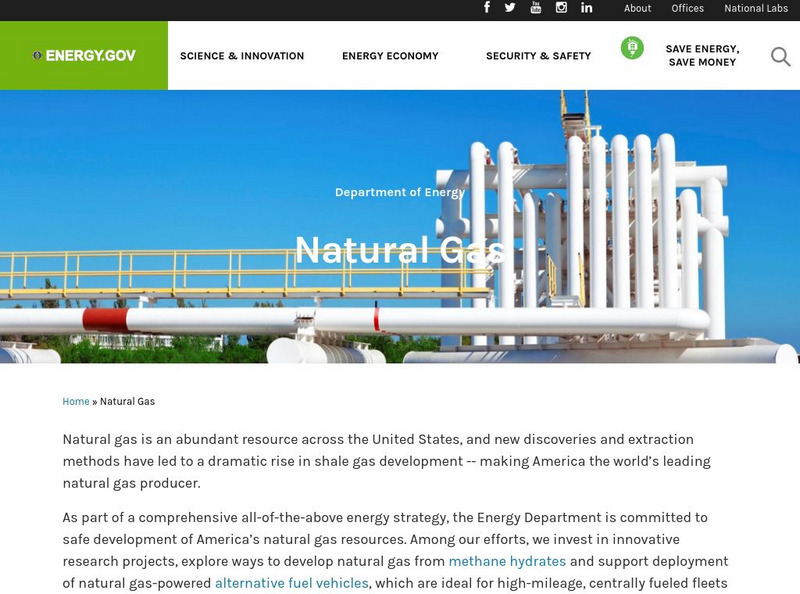
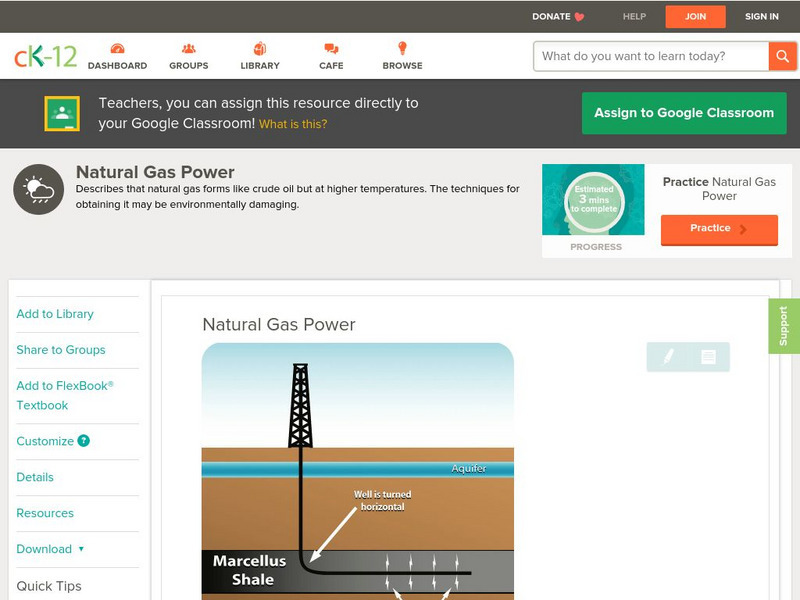

![De Paul University: Center for Urban Education: Natural Gas: An Energy Resource [Pdf] Unit Plan De Paul University: Center for Urban Education: Natural Gas: An Energy Resource [Pdf] Unit Plan](https://d15y2dacu3jp90.cloudfront.net/images/attachment_defaults/resource/large/FPO-knovation.png)
